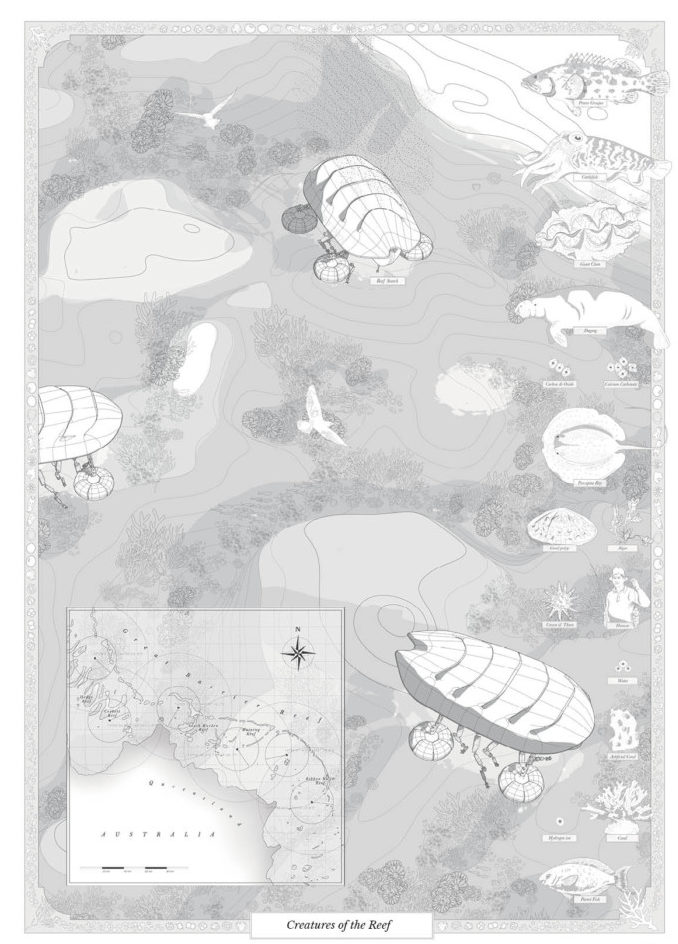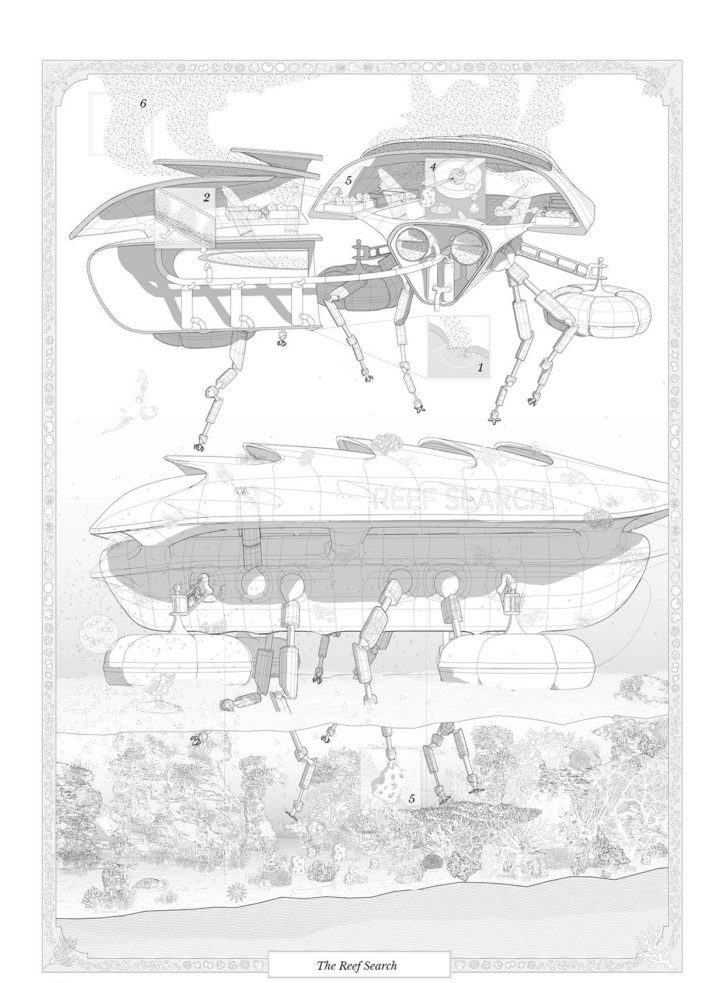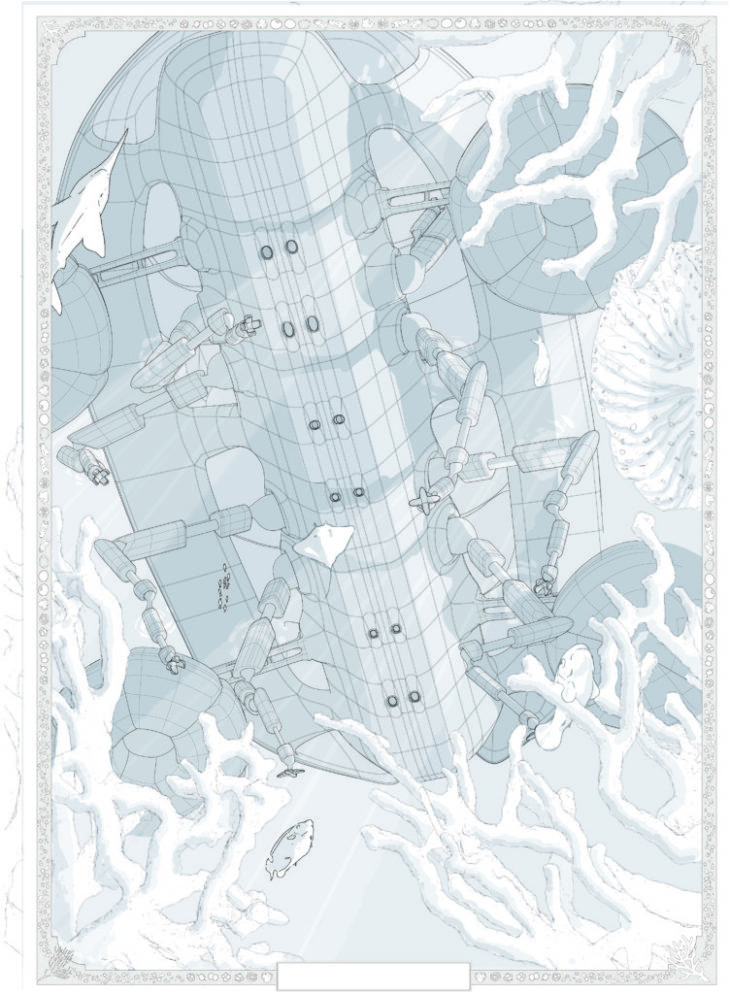The course encourages speculative
approaches to facing the origins of Global
Warming from an architectural point of
view. Based on the latest technological and
scientific studies in Climate Intervention,
we will develop multidisciplinary
proposals that will deal with issues such as
the reduction of emissions of CO2.
The focus of this intervention lies in the
Ocean, particularly within the coral reef
ecosystem.
The increased presence of CO2 in
the ocean water due to pollution
increases the production of hydrogen
molecules. Those molecules react with
the carbonate molecules rather than
with calcium, preventing the formation
of calcium carbonate, the essential
element of corals formation, causing
massive reef bleaching and perishing.


The hoovering devices will intervene along
the Great Barrier Reef, pumping salt water
inside. Here, an electrolyzed mesh filters
the water and stimulates the production
of calcium carbonate, while the hydrogen
byproduct serves as fuel. Once the calcium
carbonate is produced and stored, a 3D
printing technology will create coral
skeletons for artificial insemination. The
elements are ultimately planted through
mechanical arms to renew the reef.
The over-left water is released back into
the atmosphere as mist clouds to regulate
the temperature underneath.

Afterlife Aquatic is a project of IAAC, Institute for Advanced Architecture of Catalonia, developed in Speculative Landscape Seminar at the Master in Advanced Architecture in 2022 by: Valentina Minoletti, Mira Housen. Alex Ferragu; Faculty: Mireia Luzárraga.